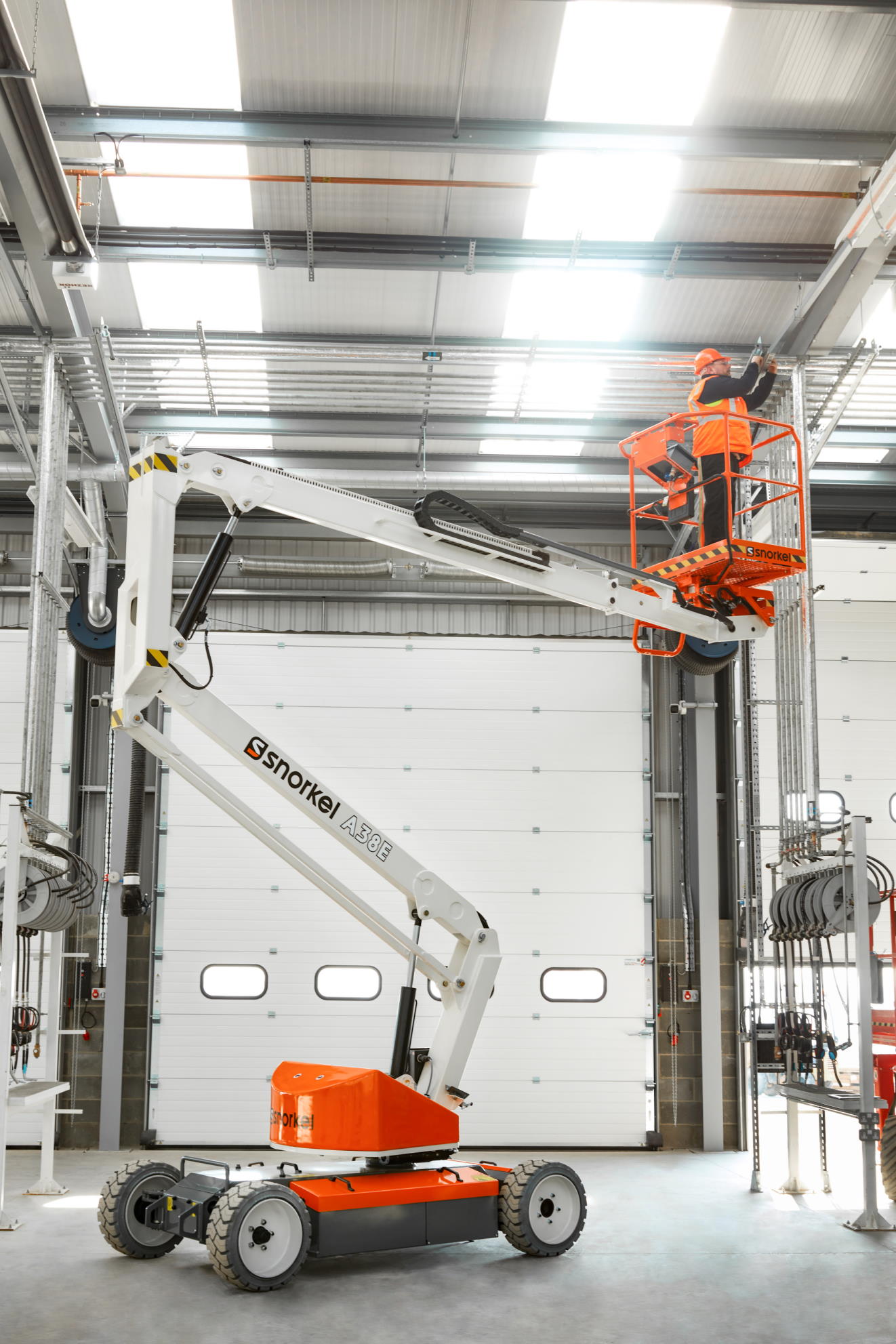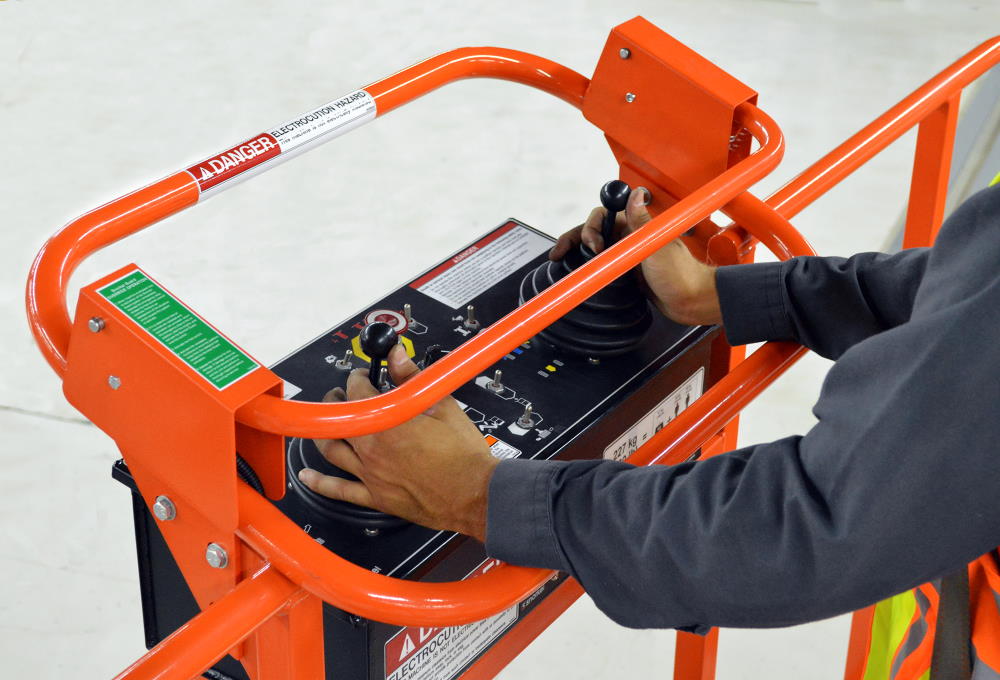Minimizing Risk when Working at Height
While mobile elevating work platforms are designed to provide a safe method to work at height, equipment manufacturers, such as Snorkel, work relentlessly to develop solutions to minimize potential risks for operators and those working around MEWPs.

In 2006, Snorkel developed the Personal Fall Arrest System (PFAS) with the aircraft industry in mind. This system permitted workers to exit the platform and work on the wings of aircraft while being restrained to the platform in an event of a fall. The system utilizes 410kg shock-absorbing lanyards but provides a safe and flexible option for working at height in various applications.

In 2015, Snorkel became the first MEWP manufacturer to introduce its secondary guarding solution, Snorkel Guard™, as a standard feature on all of its boom-type lifts, as well as offering the system as a retrofittable option for its equipment built as early as the 1990s. Snorkel Guard™ is a physical, manually-operated bar that sits above the upper control panel, and when compressed, stops all movement, enabling the operator to analyze the situation. A switch in the platform lets the operator override the system once they have determined the next safe course of action. If the operator is incapacitated or unresponsive, an operator at the ground can obtain full control of the machine and bring the platform back to the ground.
When working at height, consideration should be given to the drop zone below and around the working area. Snorkel offers a variety of options to provide increased protection from dropped objects. This includes several aftermarket solutions, which have been approved for use on Snorkel mobile elevating work platforms, as well as in-house developed flexible mesh and rigid metal enclosures for the perimeter of the platform. These enclosures can help to prevent items from falling off the platform into the drop zone and can be customized depending upon the specific application.

Technology which is becoming widely available in the automotive sector is also beginning to transfer into new construction equipment, such as advanced collision avoidance systems. Snorkel is developing more advanced collision detection using ultrasonic sensors to warn operators of approaching obstacles. Just as when driving a car, these systems are no replacement for proper training, site hazard analysis, or operator awareness, but can help to minimize risk on busy job sites.
